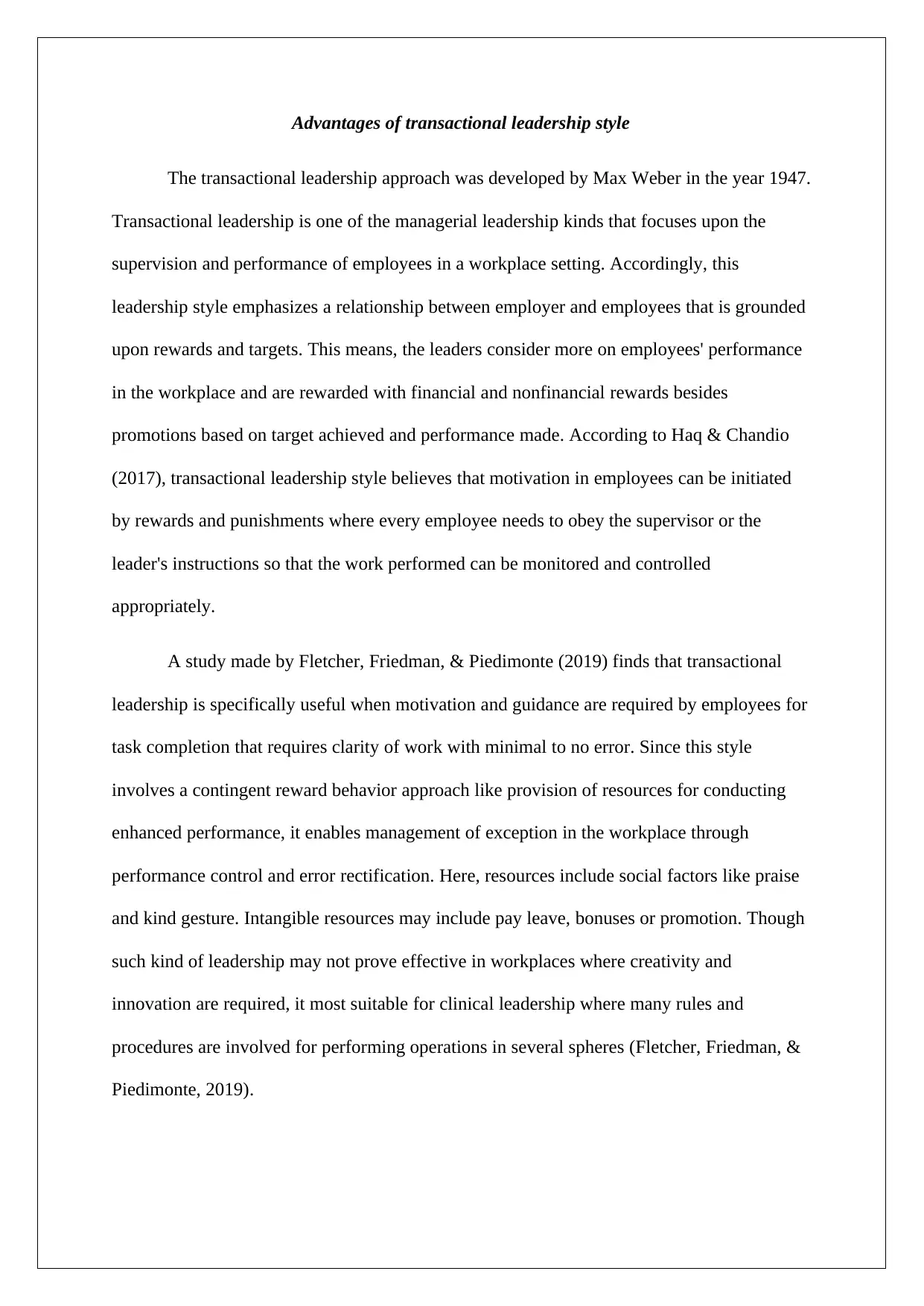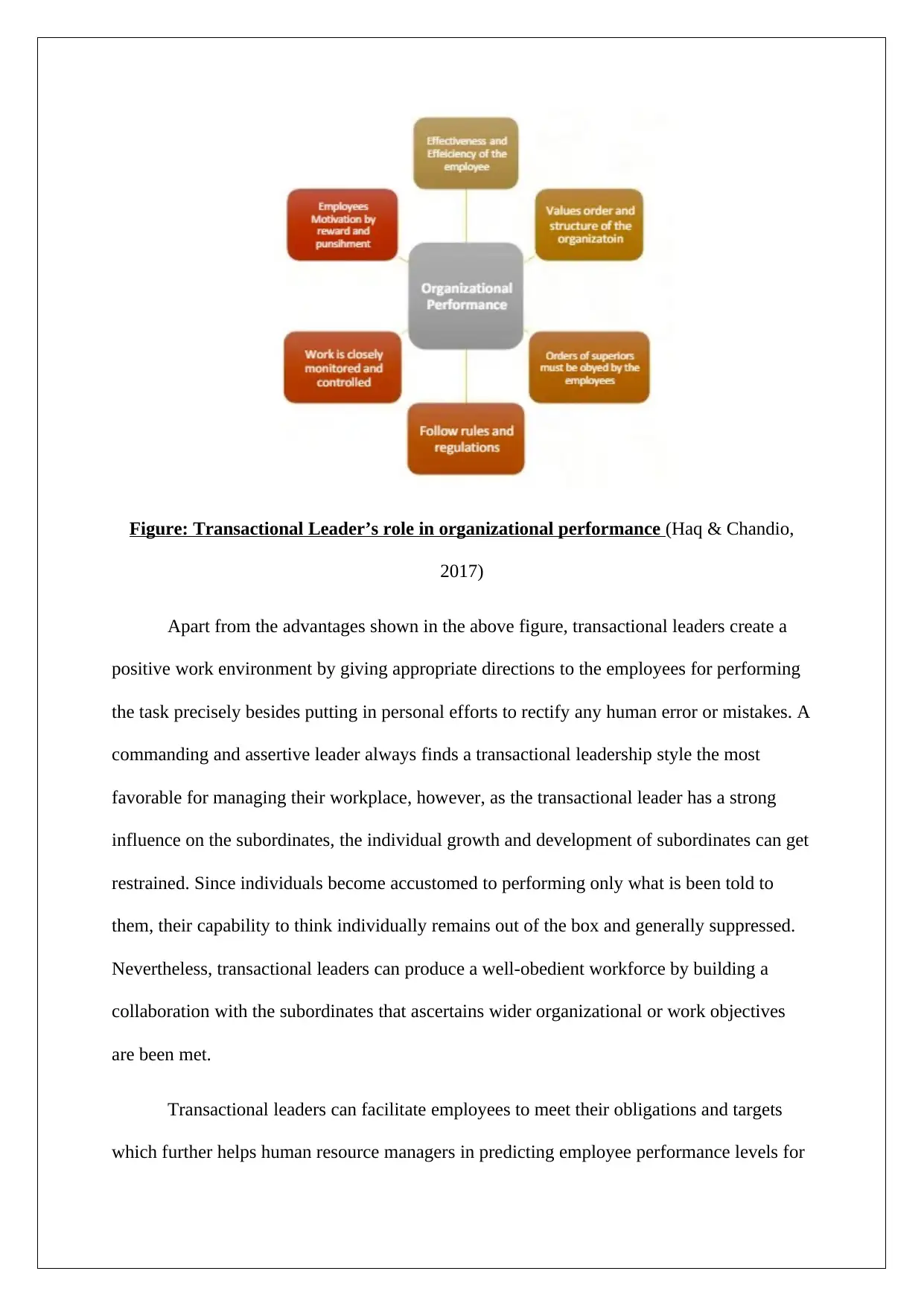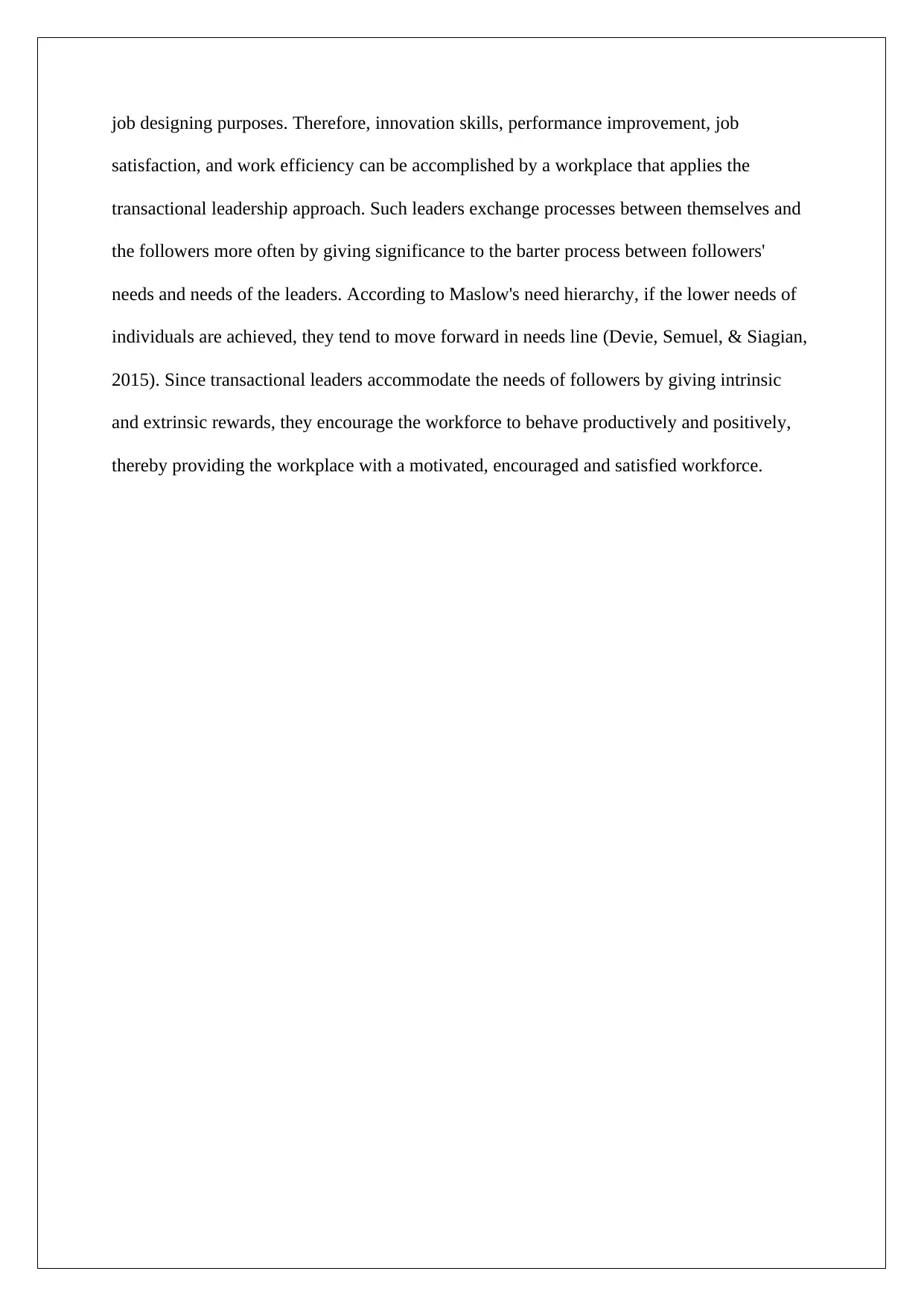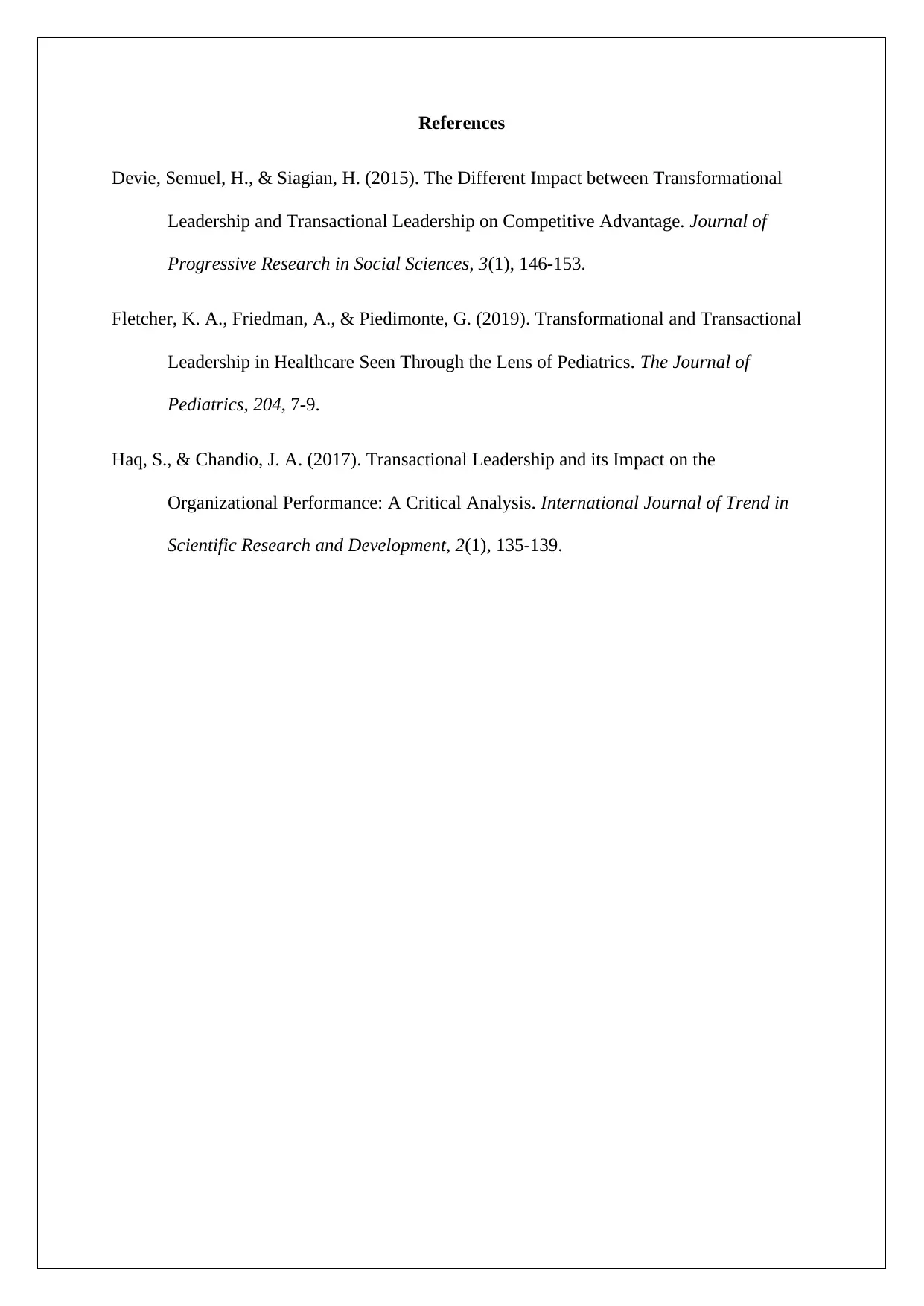Transactional Leadership Advantages: A Comprehensive Report
VerifiedAdded on 2022/10/01
|5
|752
|402
Report
AI Summary
This report examines the advantages of transactional leadership, a managerial style developed by Max Weber that emphasizes supervision, performance, and a reward-based relationship between employers and employees. It highlights how this style, which relies on contingent rewards, clear task instructions, and performance monitoring, can be particularly effective in workplaces requiring clarity, minimal errors, and adherence to procedures, such as clinical settings. The report discusses how transactional leaders create a positive work environment, provide clear directions, and address errors, while acknowledging potential limitations such as suppressing individual growth and creativity. It emphasizes how transactional leadership facilitates employee goal achievement, supports human resource management, and fosters innovation, performance improvement, job satisfaction, and overall work efficiency. The report also references relevant studies and figures to illustrate how transactional leaders motivate employees through intrinsic and extrinsic rewards, ultimately contributing to a productive and satisfied workforce.
1 out of 5












![[object Object]](/_next/static/media/star-bottom.7253800d.svg)